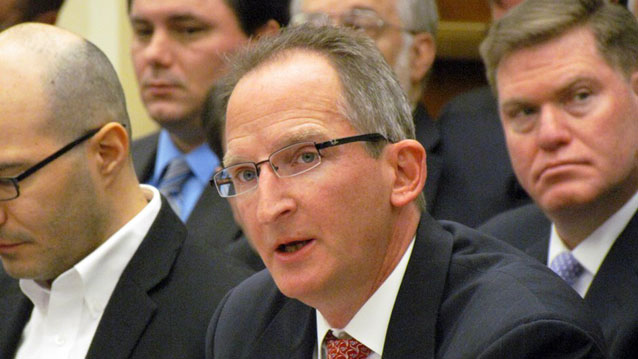EVANSTON, Ill. --- Northwestern University Professor Kemi Jona testified yesterday (Jan. 9) at a U.S. Congressional subcommittee hearing about ways to successfully involve the private sector in STEM (science, technology, engineering and math) education on the K-12 level.
Jona is director of Northwestern’s Office of STEM Partnerships (OSEP), which since 2006 has worked to connect K-12 teachers and students to the world-class STEM resources of Northwestern University and beyond.
At the invitation of U.S. Representative Dan Lipinski, Jona described some of the successful and replicable models his office has developed in conjunction with scientists and engineers in academia and industry to excite young students in STEM subjects and STEM career possibilities.
What’s often missing from discussions about the proper role of federal STEM policy and the involvement of the private sector in STEM education is the need to develop robust mechanisms that support scalable and sustainable high quality education programs, Jona stressed.
In his testimony to members of the House of Representatives’ Committee on Science, Space and Technology, he described three promising models developed by Northwestern’s Office of STEM Education Partnerships to increase federal and private sector support of STEM education.
The OSEP models outlined by Jona include:
• A partnership with Baxter, an Illinois-based global healthcare company. Baxter has supported the creation the Biotechnology Center of Excellence at Lindblom Math & Science Academy, a Chicago public school serving predominantly minority and low-income students. In the last two years, that center has trained 168 teachers from 115 schools, reaching 20,000 students. Among its innovative curriculum offerings is a set of high school biology labs based on the NIH-funded research of Northwestern medical faculty member Teresa Woodruff, a pioneer in the field of oncofertility. The center “demonstrates the power of partnerships between the private sector, universities and public schools,” Jona said. “The federal NIH dollars invested continue to pay dividends as hundreds of teachers and thousands of students each year benefit through the ongoing support provided by Baxter.”
• Illinois Pathways, a State of Illinois-led STEM education initiative that to date has created nine new statewide, public-private partnerships known as STEM Learning Exchanges. Launched with $2.3 million in federal Race to the Top funds and an additional $8.5 million in public and private matching funds, these learning exchanges include, among other projects, a kind of STEM match.com. Called the Mentor Matching Engine, it pairs private industry mentors with students to conduct independent research. “By connecting STEM mentors and students online, this website helps to level the playing field by facilitating access to mentors for all students, especially students in rural and urban areas,” Jona said. In addition, the learning exchanges have organized previously uncoordinated private sector, university and school participation in STEM and serve as statewide distribution platforms for STEM education resources.
• FUSE, an out-of-school project funded by the MacArthur Foundation, the National Science Foundation and private sector sponsors including Motorola Mobility, Siemens and IBM. FUSE aims to engage youth -- especially from underrepresented groups -- in topics such as robotics, electronics, mobile app development and 3D design through a series of increasingly difficult challenges. These challenges, in turn, foster important 21st century skills, including persistence and creative problem solving. FUSE challenges, which this year will reach close to 2,000 youth, are offered through a growing network that now includes 17 sites around metropolitan Chicago. Industry partners find FUSE’s out-of-school setting to be a particularly attractive feature as in-school curriculum development often takes more time to establish.
The Office of STEM Education Partnerships is housed within Northwestern’s School of Education and Social Policy and consists of 13 full-time staff, including scientists, education researchers, curriculum development specialists, software developers and experienced K-12 educators. Its work helps to integrate current, cutting STEM research and practice and K-12 education, while deepening the University’s connections with Chicago area communities.


